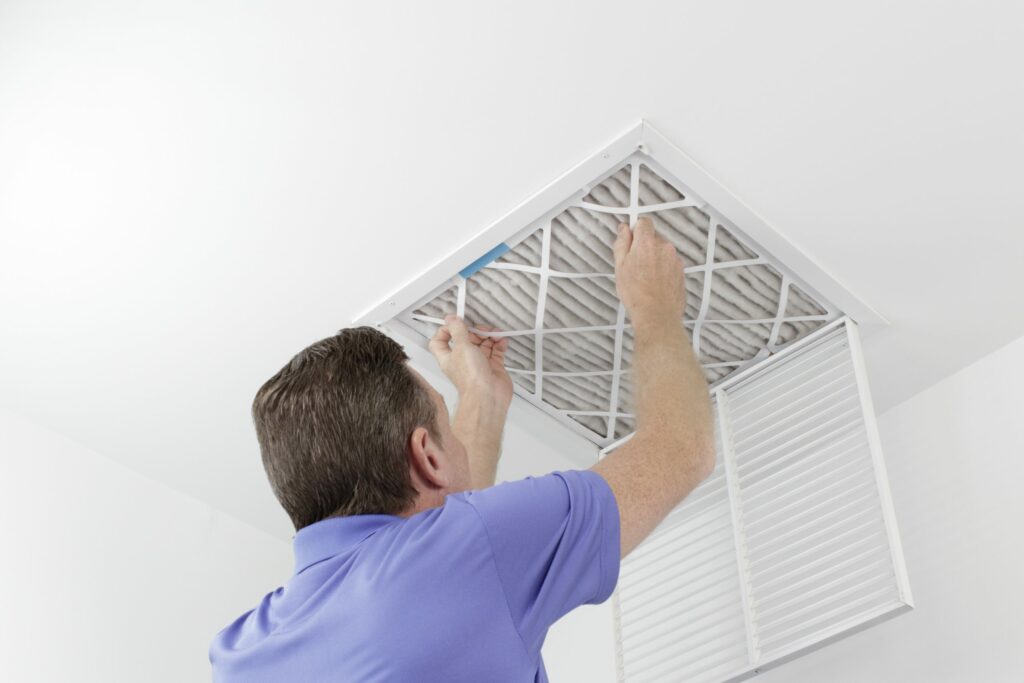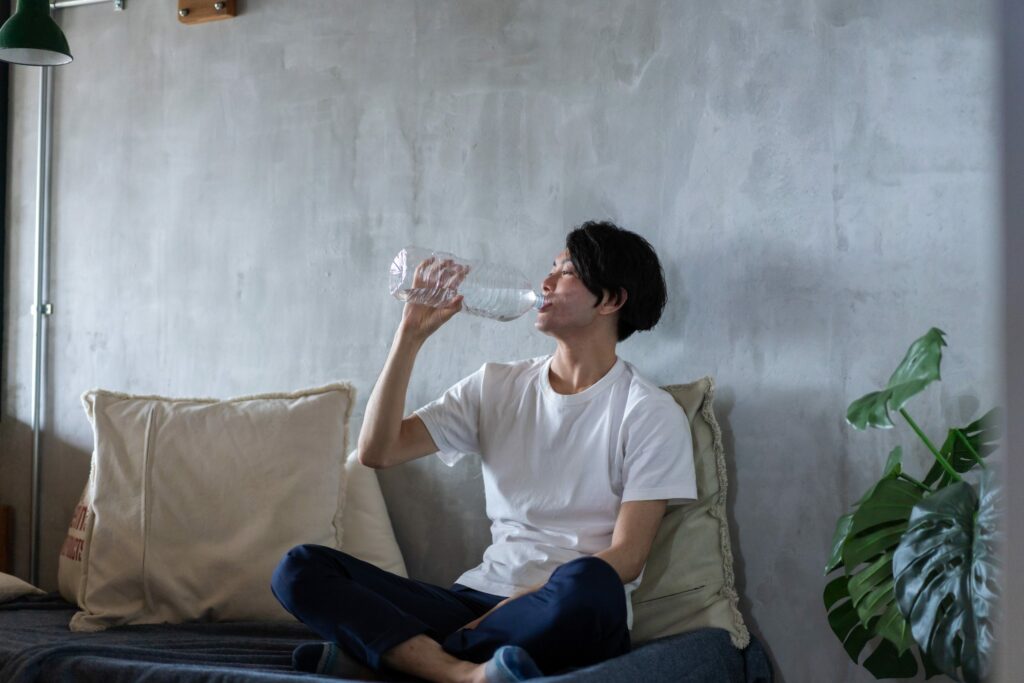Table of Contents
Ways to Cool Your Home During the Summer
As the summers get hotter year after year, the harsh effects of the blazing heat may beam down on you and your home if you don’t take proper precautions. Do you happen to stay at home regularly due to work, family, or other reasons? Because if so, you may be looking for any way to keep the heat out, especially if it can disrupt your daily life and responsibilities. Whether you’re an avid A/C user or decide to keep it untouched, trying to stay cool in your home during high temperatures is, nonetheless, a struggle to overcome.
If there are two things we try to keep to a minimum when summer rolls around, consider the inside temperatures of our homes and energy bills. On average, a home air conditioner can use about 3,000 watts of electricity an hour, translating to high electricity use. Buying a home is already an expensive cost to you, so for those who do so around the summer months, it could be stressful piling high energy bills on top of mortgage payments.
Let us save you the stress (and money) when the fearsome heatwave comes to your town; here are our nine ways to keep you and your home cool.
What Makes My Home Feel Hot?
The outside or surrounding temperature is one of the main factors that directly affect how hot your home becomes. To paint a picture, having your home among tall trees and greenery may partially block the sunlight from beaming through your windows and walls. On the other hand, if you live in a city surrounded by desert plains, such as Las Vegas, Nevada, or Sedona, Arizona, the lack of trees may make it difficult to keep heat from entering your home.
The same goes for condos and apartments that are on higher floors. For example, units on the top floors of a complex may experience warmer temperatures since they are more exposed to sunlight than units closer to the ground.
Now, let’s not forget about the exterior of your home! Do you know how wearing dark-colored clothes will cause you to feel warmer since dark colors absorb heat due to conduction? The same goes for dark-colored paint on the exterior foundation of a home. As opposed to walls painted lighter colors that reflect heat for a lesser impact, dark-painted homes will make it easier for the outside heat to transfer itself inside, making your home a touch warmer than the rest on hot days.
9 Home Cooling Solutions
As the heat continues to beam through your walls and windows, how do you plan to stay cool during a long, hot summer? As a homeowner, you may already have several expenses being put into your home that are a higher priority than turning on the A/C. That said, a high energy bill is perhaps the last thing that should be on your mind.
Whether you want to utilize your A/C system or not, we have tips for both situations, helping you feel the most comfortable and stress-free in your home while saving energy.

With A/C
Using your A/C can be an effective, energy-saving solution if you use it sparingly. Of course, using it all the time may burn a small hole in your wallet, so be prepared if you plan to use your A/C as a last resort. If you are financially able to turn on your A/C intermittently, here are a few ways to save money on your energy bills and keep yourself cool.
Clean your A/C filters. Sometimes, with the A/C at full blast, we may notice its lack of power cooling air in your home is somehow limited. This may be because the filters inside your home’s air ducts get blocked by a build-up of dust that occurs over a long period. Energy.gov recommends you “clean or replace your air conditioning system’s filter or filters every month or two during the cooling season” for maximum effectiveness. Filters may require more frequent attention if you constantly use the A/C, your home is subject to dusty conditions, or you have pets that shed a fair amount. Filter maintenance ensures that the cool air seamlessly flows through your vents without buildup.
Turn on your A/C at low peak times. Some electric companies mail out energy-saving guides that detail how much it would cost if you were to turn on the A/C during different times of the day. For example, you may experience higher charges to your energy bill if you were to use your A/C around the afternoon, the hottest time of the day. On the other hand, it will cost less to use the A/C right at dusk or in the middle of the night. In the summer, you can imagine that costs will be higher than at other times of the year. Strategically, you may want to turn on the A/C during the low peak times to save as much energy as possible. Additionally, turning on the A/C at night, which is considered a low peak time, will cool your house and keep it cool for the following day.
Follow an A/C schedule. In conjunction with the above tip, you can try to follow a strict A/C schedule to ensure you don’t use more energy than you anticipate. This can be incredibly useful if you feel that you need to use the A/C during the day, but want to minimize use as much as possible. Following a schedule can keep your energy bills consistent and without surprises.

Without A/C
One of the best ways to save money on your energy bills during the hot summer months is to not use the A/C at all. While this doesn’t sound ideal since the A/C is known to provide an efficient and effective way of cooling, remember that there are still ways to keep your home cool without having the temptation to turn on your air conditioning system.
Shut your windows and blinds. Even though you may want to let some sun in for natural lighting and bring in the light inside your living space, remember that it also brings in heat from the sun. I made this mistake when I wanted to let natural light in for my virtual meetings but noticed that my room was distinctively warmer than other rooms that had their blinds shut. Once I shut the blinds in my work room, the temperature of the room reduced to a neutral temperature and I felt more comfortable.
Open your windows at night. Proper air circulation will be your best friend if you open your windows at night, granted no insects come inside! By doing this, you allow the hot air that accumulated during the day to exit out the windows while cold air brings itself in at night, cooling your home immensely. Remember to close them early in the morning, so you can trap the cool air inside without letting hot air in.
Adjust your ceiling fans. If you have ceiling fans, you can change the direction the fans turn for proper air circulation. According to saveenergy.ca, adjusting them to turn counter-clockwise will “push air down and create a cool breeze.” Doing this helps keep a room’s temperature consistent without needing to turn on the A/C.
Buy stand-alone fans. Though stand-alone fans incur an additional one-time expense, they are known to come in handy, especially if you only want to cool a specific room at a time. Several fans nowadays are portable, which makes it easy to transport them from room to room. Stand-alone fans are considered a saving grace for those who work from home and are not always moving around the house.
Invest in blackout curtains. Not only do blackout curtains contribute to the overall ambiance of any room they’re in, but they are also extremely helpful in keeping heat out of the house and keeping cool in. NBC News deems the term “blackout curtain” to refer to “drapes made of a double-lined, tightly woven fabric designed to block out outside light completely.”
Invest in a dehumidifier. Unknown to most, a dehumidifier is a crafty way to keep your living environment cool. Similar to an air conditioner, a dehumidifier extracts air from the room and cools it by condensing the air over cold coils, which then turn into liquid form that is reheated and removes humidity. So even though dehumidifiers don’t exactly make air cold, instead, they extract the moisture from the hot air in the room to reduce humidity and keep a neutral, comfortable temperature.
Other “Cool” Purchases for Your Home
Though our goal is for you to save as much energy and money as possible, there may be instances when we have to loosen our wallets a bit to make our home the most comfortable. Constantly running the A/C means having to face a recurring expense, but if you have the budget, you can make one-time expenses for products that may be as effective as using the air conditioner.
Other than the above suggestions we mentioned, such as the stand-alone fans, blackout curtains, and dehumidifier, here are a few other items that you may want to look into:
- Cooling Pillow. Are you as dependent on your pillows for a good night’s sleep as we are? If so, try out a cooling pillow, which provides a nice touch to your body in case you have trouble sleeping during a hot summer night.
- Cooling Blanket. There is a wide collection of blankets that keep you warm during the winter, but what about blankets that do the opposite? Introducing cooling blankets, which have a certain fabric with proper ventilation, keeping air flowing instead on in the blanket.
- Moisture-Wicking Sheets. If you’re like me, you like to have a blanket on you no matter how hot it gets at night. These sheets will help manage perspiration to keep you cooler and drier.
These one-time expenses will do a great job in keeping you cool during the summer, as well as give you a good night’s rest!

Stay Cool!
The summer season is always fun! Filled with joyful activities and bright moments, summer is one of the best seasons for making memories. That said, we shouldn’t let the blazing heat ruin our opportunities for making the most of our summer. We hope these cooling strategies alleviated some of the stress that comes with using electricity in your home and that you are staying cool for the rest of the summers ahead.
Are you looking to move to another city or state where the summers aren’t as hot? We can help you finance your next home in a breeze. Reach out to us today if you’re interested in knowing your options. Stay cool!



